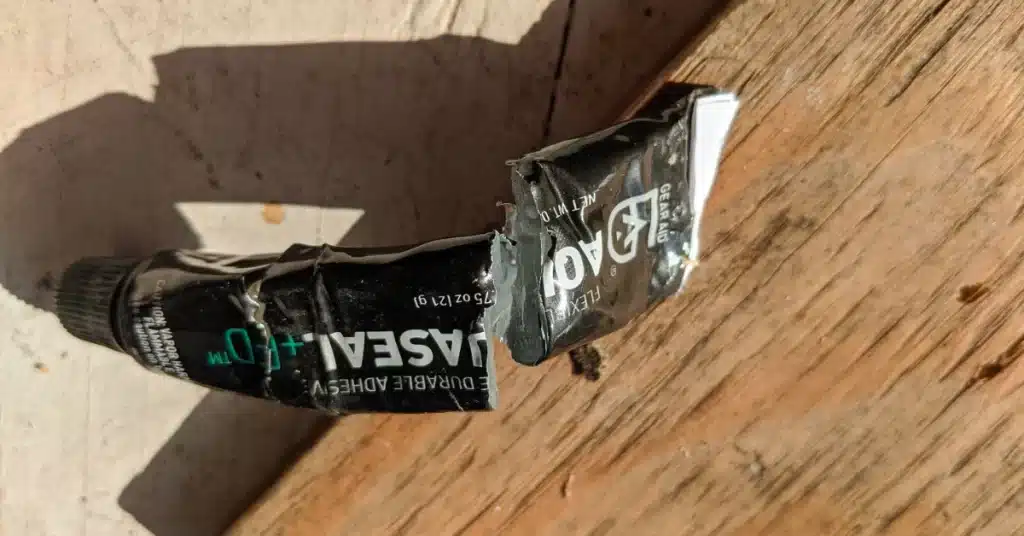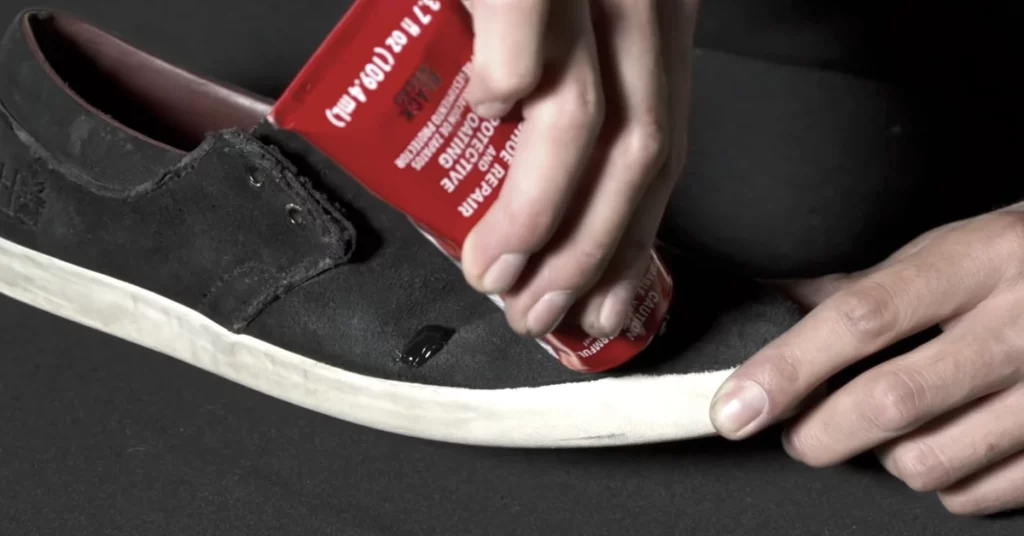If you’re looking for adhesives to repair, fix, or for more protection, you’ll need a reliable adhesive that can fit your purpose. You’ll run into various options in the market for suitable adhesives which you can use to repair or fix your shoes.
Aquaseal and Shoe Goo are both excellent, viable products to repair your old, worn-out boots, with various similarities and differences. So, which one should you side with in the Aquaseal vs. Shoe Goo debate?
Read More: Loctite Shoe Glue vs. Shoe Goo
Read More: Seam Grip vs. Aquaseal
Aquaseal vs. Shoe Goo
Overview of Aquaseal
Aquaseal is a brand of various adhesives manufactured and distributed by GearAid. You can find multiple Aquaseal like, Aquaseal FD Repair Adhesive, Aquaseal UV Repair Adhesive, Aquaseal NEO Neoprene Contact Cement, and Aquaseal SR Shoe Repair Adhesive.
Aquaseal SR Shoe Repair Adhesive is the product you need if you’re looking to repair your old, worn-out boots. Aquaseal SR was formerly called Freesole. You can purchase Aquaseal SR Shoe Repair Adhesive in a tube of 28 grams, and it comes in clear color. You can use Aquaseal SR to repair various parts and components of your shoes, like – rebuilding worn heels, repairing soles, and more.

Aquaseal SR is versatile and works well with various standard components used to make shoes like – leather, rubber, canvas, suede, nylon, and neoprene. Furthermore, you can use Aquaseal for repairing shoes you use for sports or other recreational activities since it forms a flexible bond once it’s correctly set.
You can use Aquaseal SR for shoes in high temperatures or below zero since it has a service temperature range of -20°F to 180°F. Furthermore, you can use Aquaseal SR for shoes or boots during the rainy season or in damp conditions since it creates a waterproof seal once fully cured.
Aquaseal SR is durable in the long run and abrasion resistant.
Read More: Goop Glue Vs. E6000
Overview of Shoe Goo
Shoe Goo is a product manufactured by Eclectic Products and is almost a household name for adhesives for repairing shoes. You can use Shoe Goo to improve and fix your boots, apply coats of the product on various components of your shoes for extra protection, or many more purposes.
Shoe Goo is composed of Styrene-butadiene, Toluene, and Solvent naphtha and comes in clear and black colors. You can use Shoe Goo to repair and fix your shoes and boots and components of shoes made of leather, rubber, canvas, or vinyl.
You can also coat your new shoes with Shoe Goo to protect against premature wear and tear. Furthermore, Shoe Goo works as an excellent sealant, and you can use Shoe Goo to fill up small holes, gaps, or cracks in your shoes.

You can use Shoe Goo for boots you plan to use during the rainy season or in damp conditions since it uses a waterproof formula. Furthermore, you can also use Shoe Goo for shoes you use in high-temperature areas or during snowfall since it has a service temperature ranging from -40°F to 150°F.
You can use Shoe Goo for shoes you use for sports or recreationally since Shoe Goo forms a flexible yet rigid and durable bond once it’s fully cured.
Differences Between Aquaseal And Shoe Goo
Now let’s examine how Aquaseal SR and Shoe Goo differ.
Appropriate Materials to Use On
Aquaseal SR and Shoe Goo are both intended for repairing and fixing shoes, so they work well with standard materials shoes are made with.
Aquaseal SR works well with leather, rubber, canvas, suede, nylon, and neoprene.
On the other hand, Shoe Goo works well with leather, canvas, rubber, and vinyl.
Cure Time
After applying Aquaseal SR, a complete cure can take 8 to 12 hours.
On the other hand, after you apply Shoe Goo, a complete cure can take up to 24 hours. A full treatment can take up to 48 hours if you use a thick coat of Shoe Goo.
Service Temperature
Aquaseal SR has a service temperature range of -20°F to 180°F.
On the other hand, Shoe Goo has a service temperature range of -40°F to 150°F.
Composition
Aquaseal SR and Shoe Goo are composed of different materials, but both provide a robust, durable, and flexible bond once fully cured.
Aquaseal SR is composed of thermoset urethane.
On the other hand, Shoe Goo is composed of Styrene-butadiene, Toluene, and Solvent Naphtha.
Read More: How to Use Shoe Goo?
What is an alternative to Aquaseal?
Is shoe goo just silicone?
While Shoe Goo does contain some silicone, it also contains other ingredients that make it more suitable for shoe repairs. The specific formulation of Shoe Goo is proprietary, meaning that the exact ingredients and proportions are not publicly disclosed. However, the result is a stronger and more flexible product than standard silicone sealants.
Last Opinion
Aquaseal SR Shoe Repair Adhesive and Shoe Goo both work well with various materials, are water-resistant and have robust performance while creating a flexible bond. So, in the battle between Aquaseal vs. Shoe Goo, which one should you side with?
It depends on you; Aquaseal is more versatile in materials it works well with and cures much faster. On the other hand, Shoe Goo is also versatile for bonding well with materials, and you can use it as a sealant and fill gaps, holes, or cracks in your shoes.

